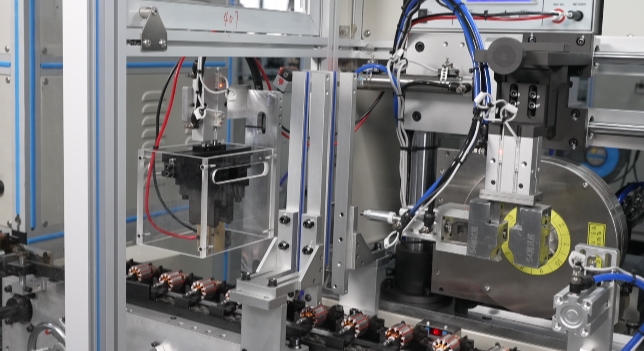What are the common sensor failures and their solutions for motor motor rotor (single-station) testers?
For the “motor motor rotor (single-station) tester” common sensor failure and its solution, the following are some detailed fault analysis and processing methods:
1, motor speed sensor failure:
Failure phenomenon: the sensor does not work, the signal is unstable or no signal.
Solution: Ensure that the sensor's power supply is normal, check the power supply connection, interface and voltage are in line with the specifications. Use an oscilloscope or multimeter to measure the output signal and check whether there is a pulse signal output. If there is no signal, the sensor may be damaged or poorly connected.

2, sensor signal output problem :
Failure phenomenon: signal loss or interference.
Solution: Check whether the connection line from the sensor to the controller is firm, broken or short-circuited. If necessary, replace the connection line.
3, the sensor position is not appropriate :
Failure phenomenon: signal instability or inaccuracy.
Solution: Confirm that the installation position is correct, and the distance between the rotor or magnet in the specified range, to avoid contact with the rotor shaft.
4, signal interference problems :
Failure phenomenon: signal waveform distortion.
Solution: Check whether there is electromagnetic interference (EMI), ensure and signal line away from high-voltage cables and other possible sources of interference.
5, rotor and magnet problems :
Failure phenomenon: inaccurate speed.
Solution: Confirm whether there is a mark on the rotor or the magnet is working properly, to ensure that there is no wear or fall off.
6, servo motor temperature sensor failure :
Failure phenomenon: temperature sensor signal abnormality, disconnection, short circuit, aging, high ambient temperature, pollution or damage.
Solution: Check the temperature sensor connection line to ensure that there is no break or short circuit; for aging sensors need to be replaced; in the high-temperature environment, the need to improve the working conditions of the sensor; for contamination or damage to the sensor, the need to clean or replace.
These solutions can help users quickly locate the problem and take appropriate measures to repair the tester to reduce downtime and ensure the continuity and accuracy of the test.
※ If you still can't solve the problem by the above ways and means, please contact the technical specialists of Xinhui Electromechanical Equipment Co., Ltd. through the page chat tool for help.







